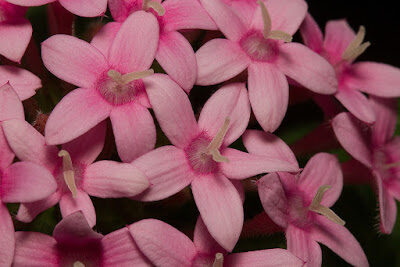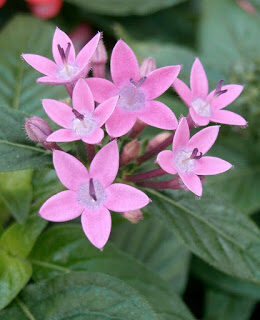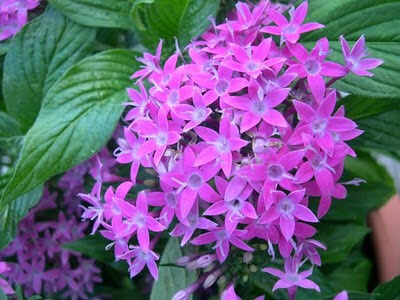12:10
An upright shrubby plant with pale green, hairy oval leaves 2-4in/5-10cm long and lin/2.5cm wide, this is the most common species grown as an indoor plant. It thrives best in a heated greenhouse where the air is not too dry. And it should really be regarded as only a temporary plant in the home.

The flowers, which appear in late summer and fall, grow in terminal clusters on the many branches. They come in shades of pink, lilac, and carmine red to mauve and blue, and, occasionally, white. The corona has a narrow, 3/4-in/2-cm-long tube, widening slightly toward the top and ending in a five-lobed star.
FACT FILE PENTAS LANCEOLATA (Syn. P. CARNEA) Rubiaceae Egyptian Star Cluster

ORIGIN: Tropical East Africa; Arabian Peninsula.
HEIGHT: 3ft/90cm.
POTTING MIX: Soil- or peat-moss-based.
REPOTTING: Move into a pot one size larger in spring.
PROPAGATION: In spring or early summer, take 2-3in/5-8cm stem cuttings.
KEEPING PLANTS: Pinch off the growing tips from time to time to encourage bushiness.
PLANT CARE PENTAS LANCEOLATA (syn. P. CARNEA) Rubiaceae Egyptian Star Cluster
- Good light with 4 hours of direct sunlight.
- Normal warm room temperature, but never allow the level to drop below 50°F/10°C.

- Water moderately in the growing period; give less water when flowering is over.
- Overwatering causes the leaves to turn yellow, and they will not recover.
- Feed every 2 weeks in summer.
- Share
- Share
- Share
- Share
